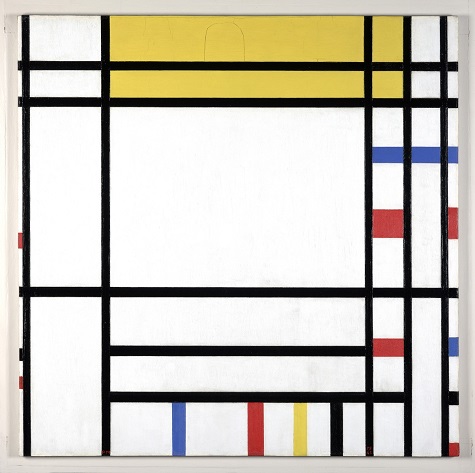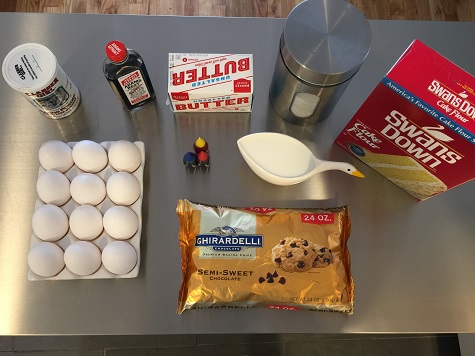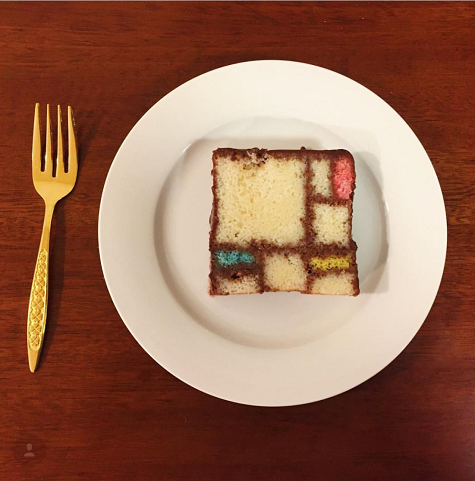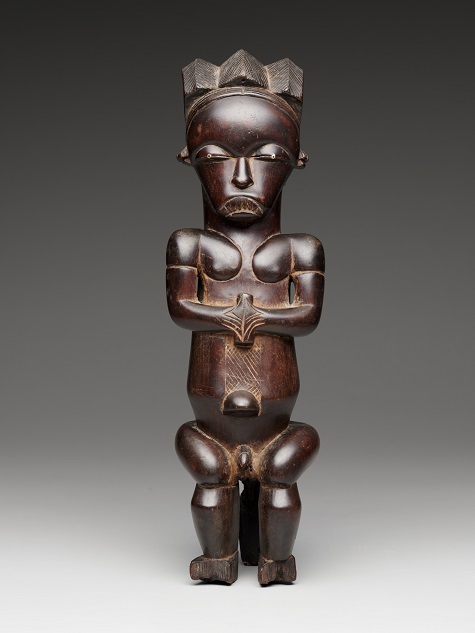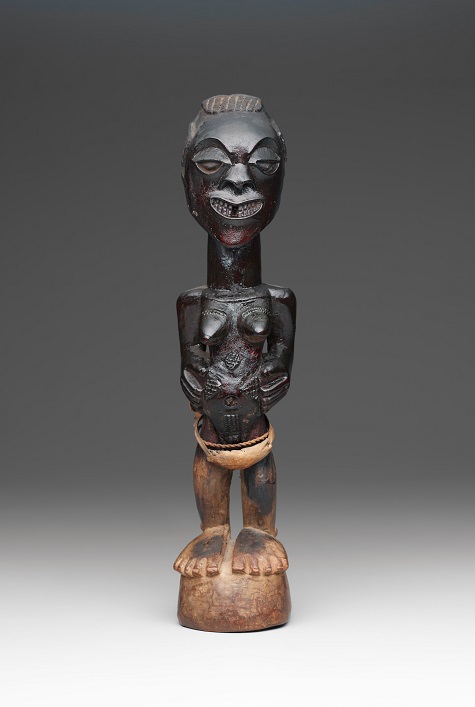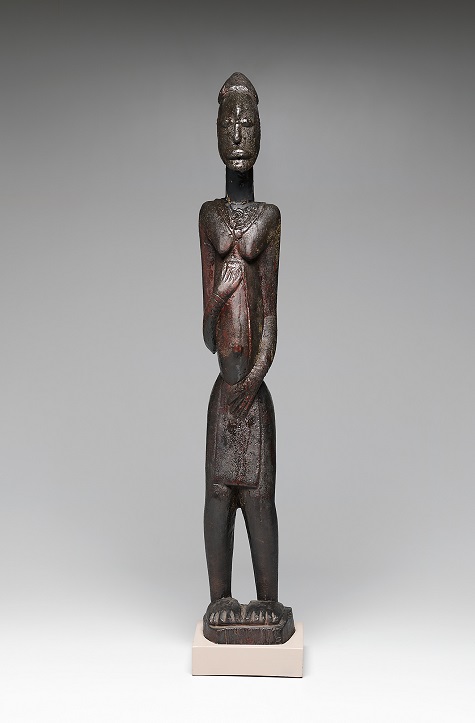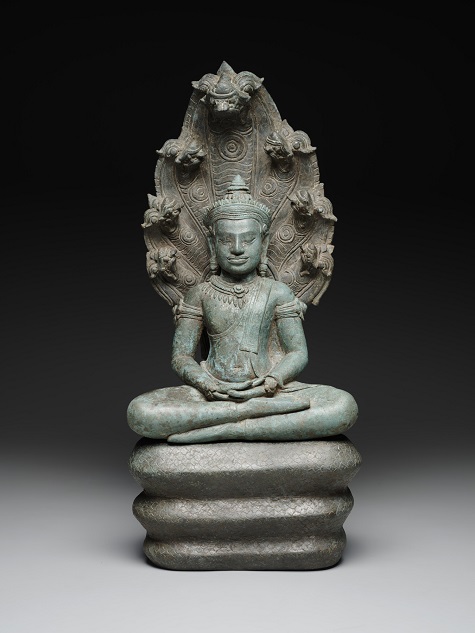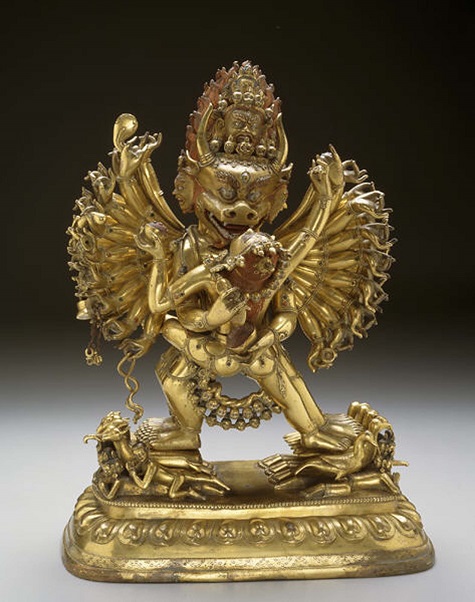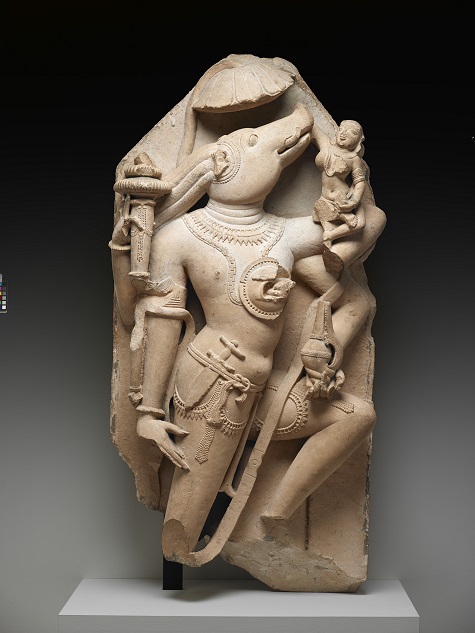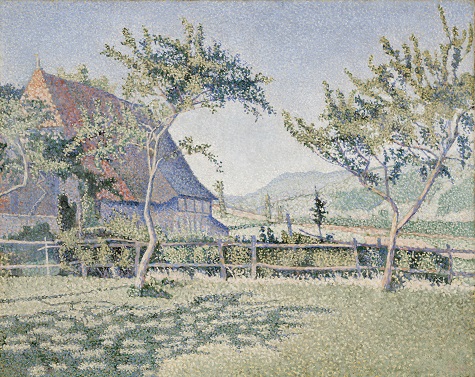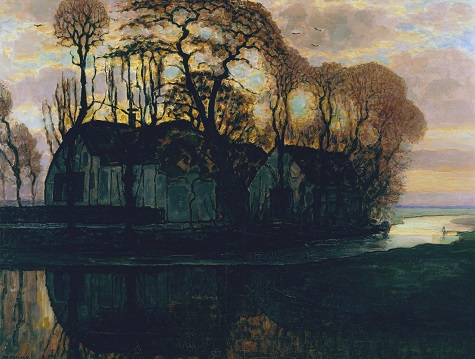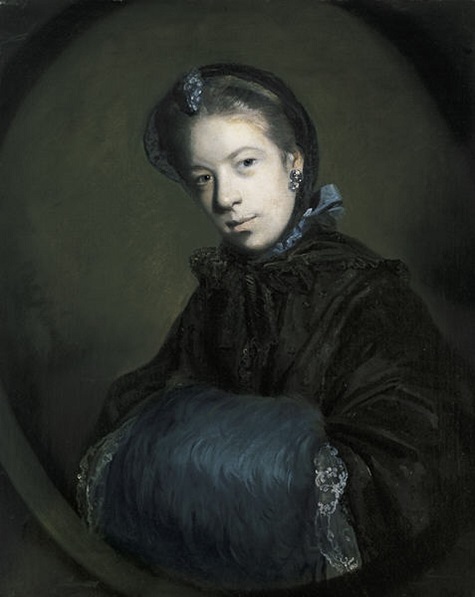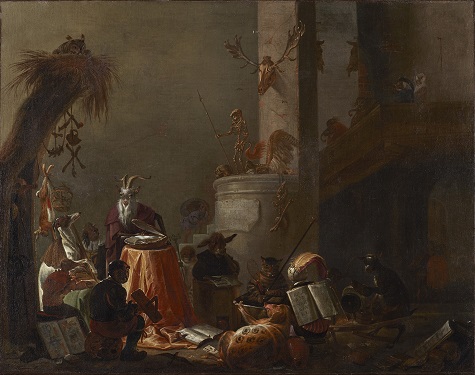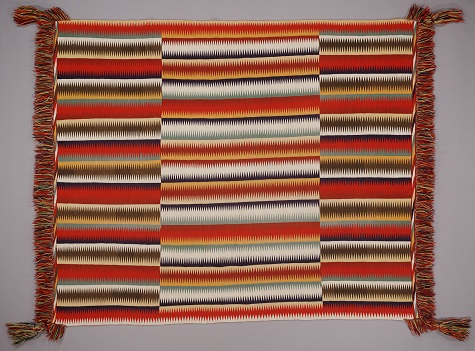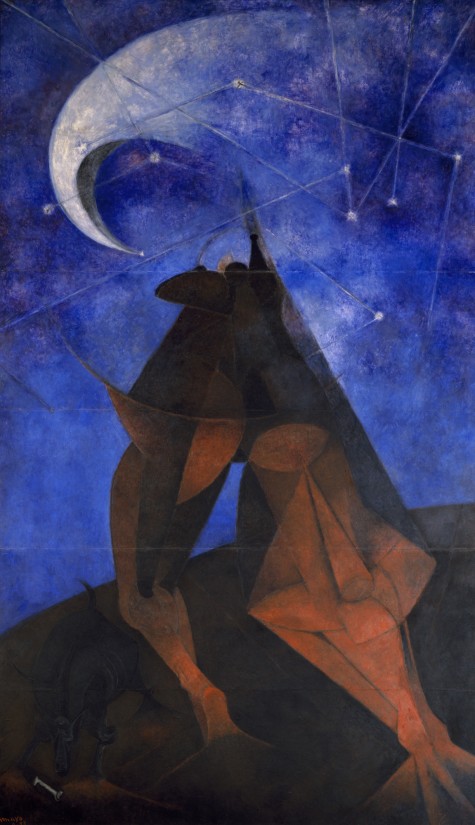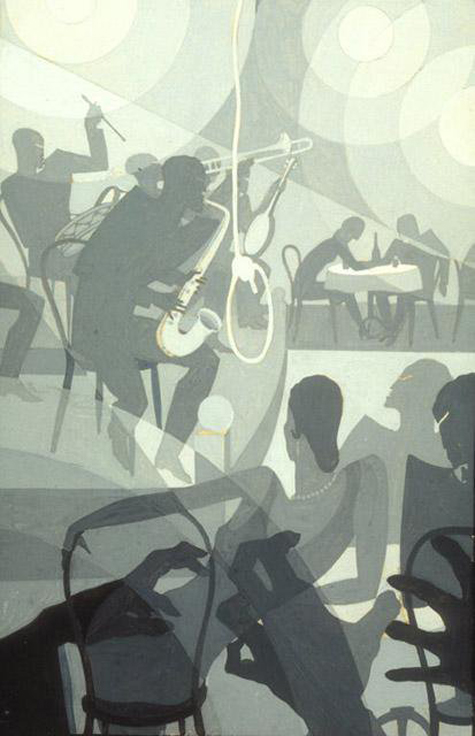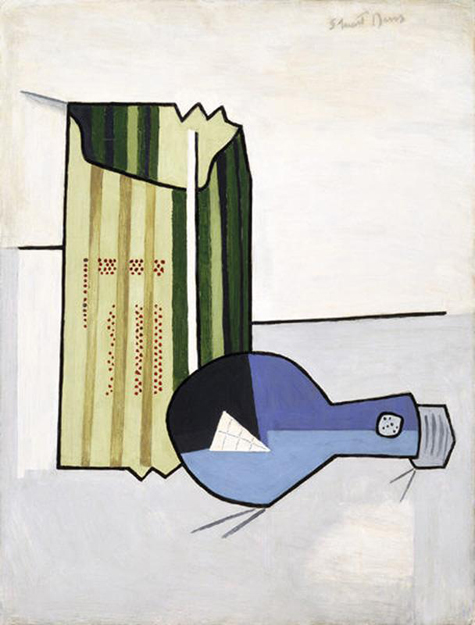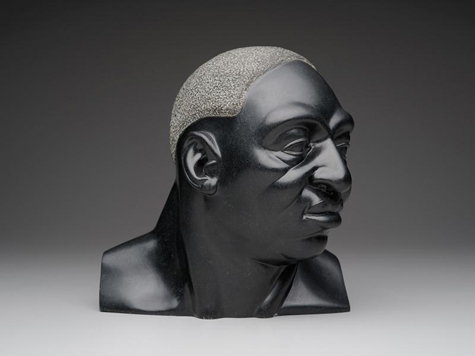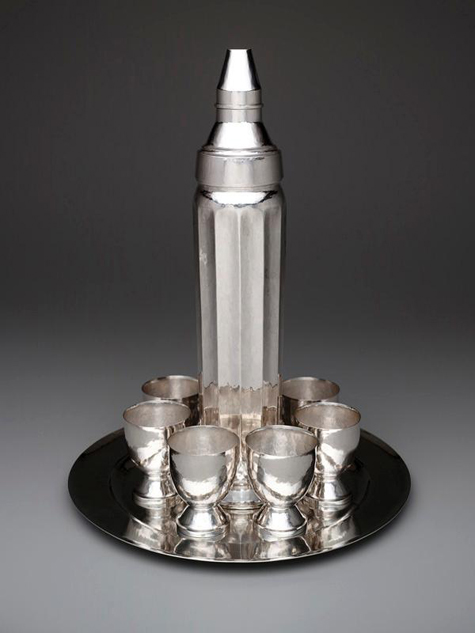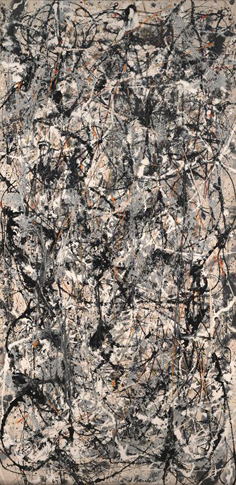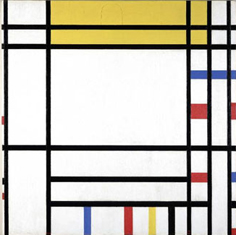Last year the DMA pets took to the catwalk for Dress Your Pet Up Day, which is held every January 14. We had such a paws-itive response that we couldn’t wait to get our fashion hounds ready for their close ups once again. DMA staff and their furry pals took inspiration from the DMA’s collection and delivered some on trend looks that will get your tails WAGging.
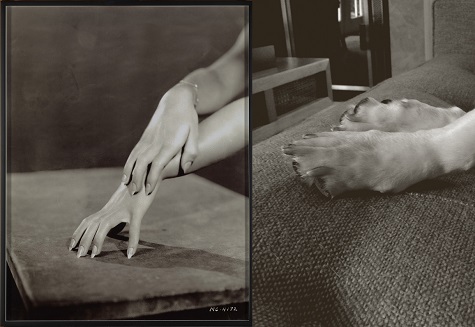
DMA Staffer: Mandy Engleman, Director of Creative Services
DMA Pet: Sabrina, Bassador (Basset Hound/Yellow Lab), age 6 1/2
Portrait Inspiration: Marlo Pascual, Untitled, 2009
I’ve always been fascinated with Sabby’s short little legs and big paws, and when I saw the Pascual photo I knew we had to re-create this artistic still life. However, due to her short/long stature, a lounging pose was required!

DMA Staffer: Stacey Lizotte, Head of Adult Programming and Multimedia Services
DMA Pet: Parker (he belongs to my parents but I borrowed him when I was home for Christmas), English Springer Spaniel, age 1
Portrait Inspiration: Banquete chair with pandas, Fernando Campana and Humberto Campana, designed 2006
With Parker being a black-and-white Springer, my mind went immediately to the banquete chair with pandas in our collection. Since it was cost prohibitive to buy a lot of stuffed pandas to place around Parker in a chair shape, my mom made a panda bear quilt with fabric we found online, which we then draped over a chair before posing Parker in it.
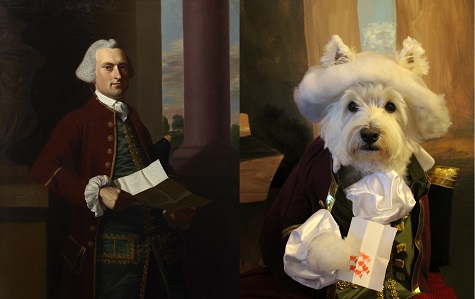
DMA Staffer: Amanda Blake, Head of Family, Access, and School Experiences
DMA Pet: George Costanza, West Highland White Terrier, age 8
Portrait Inspiration: John Singleton Copley, Woodbury Langdon, 1767
Dress Your Pet Up Day provided George with the perfect excuse to invite Chloe over for a play date. Even though he is a rough and tumble type of dog, he knows when to bring on the charm and put his best paw forward like Woodbury. (While George has many talents, holding a westie stamped document isn’t one of them. Amanda created a lifelike paw for his shoot).
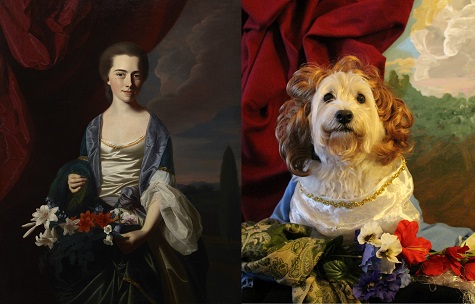
DMA Staffer: Kimberly Daniell, Manager of Communications and Public Affairs
DMA Pet: Chloe (she is actually my roommate’s dog. I dog-napped her for the photo shoot), West Highland Terrier, age 9
Portrait Inspiration: John Singleton Copley, Sarah Sherburne Langdon, 1767
Chloe and George have been discussing portrait options since last January to create a team for this year’s Dress Your Pet Up Day. The perfect pair for this westie duo were the Langdons, though George took to his sophisticated background much more easily than Chloe. She hasn’t adjusted to the nouveau riche lifestyle of the Langdons.
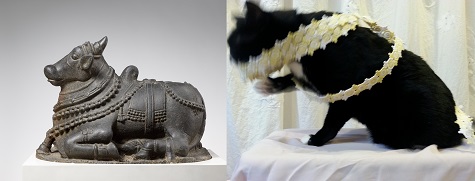
DMA Staffer: Fran Baas, Associate Conservator
DMA Pet: Captain Charles, Domestic Shorthair (very handsome Tuxedo with many admirers), age 4
Portrait Inspiration: Nandi, c. 13th century, South India
A cat can be a difficult model. Since I am the objects conservator here at the DMA, I wanted to choose one of the many fabulous sculptures from the collection that are currently on view. The Nandi bull, the bull that serves as mount and gatekeeper for the god Shiva, was an obvious choice by my dear Captain for several reasons: reclining, an “immature” bull, a protector, and adored by many. He didn’t really want to wear the floral garland trim and thought it was something to play with. His usual “reclining” pose went out the door.
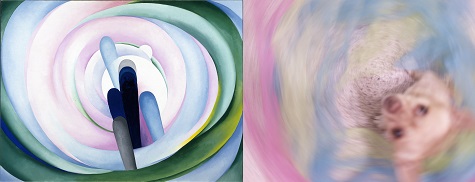
DMA Staffer: Jessica Fuentes, The Center for Creative Connections Gallery Coordinator
DMA Pet: Fidel, short-haired Chihuahua, age 3
Portrait Inspiration: Georgia O’Keeffe, Grey Blue & Black—Pink Circle, 1929
Georgia O’Keeffe is one of my daughter’s favorite artists and Grey Blue & Black – Pink Circle is my favorite O’Keeffe in the Museum’s collection. My original idea was to attach colored fabric to my dogs’ harnesses and capture them running in circles; however, Nene did not want to participate, so I was left with one Chihuahua who didn’t want to run around solo. So I improvised. I set the camera for a longer exposure setting, stood above Fidel, and twisted the camera as I took my photograph, blurring the colors around him.
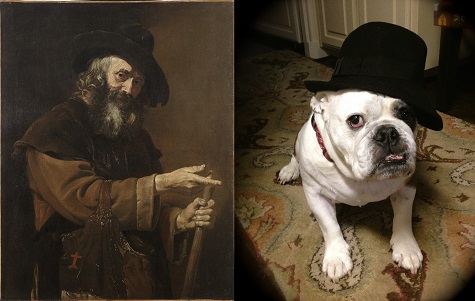
DMA Staffer: Laura Hartman, Paintings Conservator
DMA Pet: Baxter, Bulldog, age 7
Portrait Inspiration: Pietro Bellotti, Old Pilgrim, c. 1660s-1670s
Baxter has always looked like an old man, even as a puppy. He captures the feeling of this painting very well, but he would not cooperate and wear a beard.
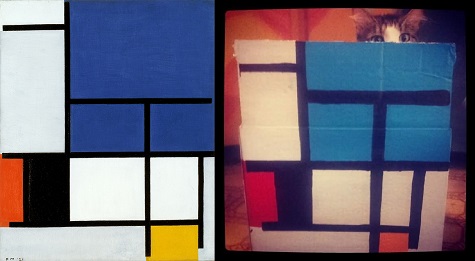
DMA Staffer: Maegan Hoffmann, Assistant Manager of DMA Partners Program
DMA Pet: Sampson, American Long Hair Kitty-Snuggle-Study-Buddy-Cat, age 6
Portrait Inspiration: Piet Mondrian, Composition with Large Blue Plane, Red, Black, Yellow, and Gray, 1921
Sampson adores boxes and loves to hang out inside them. When I saw Mondrian’s piece Composition with Large Blue Plane, Red, Black, Yellow, and Gray, I just knew Sampson would love to participate in the work by transforming the flat 2D plane of the work into a 3D box of De Stijl art! Sampson is mostly white and black and gray with pops of color, like the ginger in his fur or the green in his eyes, similar (but not exactly) to Mondrian’s pieces during the De Stijl movement that focused on the use of primary colors and cubist influence. Mondrian believed that “all things are parts of a whole,” and Sampson definitely completes my existence.
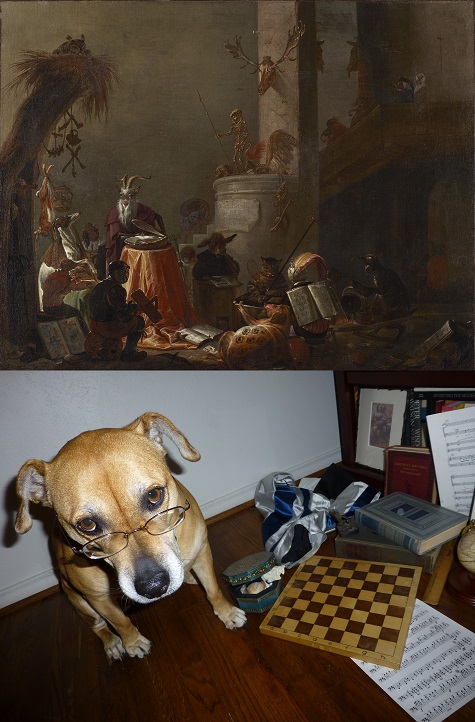
DMA Staffer: Reagan Duplisea, Associate Registrar, Exhibitions
DMA Pet: Mosey, Florida Brown Dog, age 10
Portrait Inspiration: Cornelis Saftleven, College of Animals, 1655
Mosey was inspired by her four-legged scholar friends in the College of Animals to brush up on her humanities in order to be a well-rounded canine companion. The cat (not pictured despite many attempts) claimed that she knew all that was worth knowing in life and much preferred napping to studying, thank you very much.
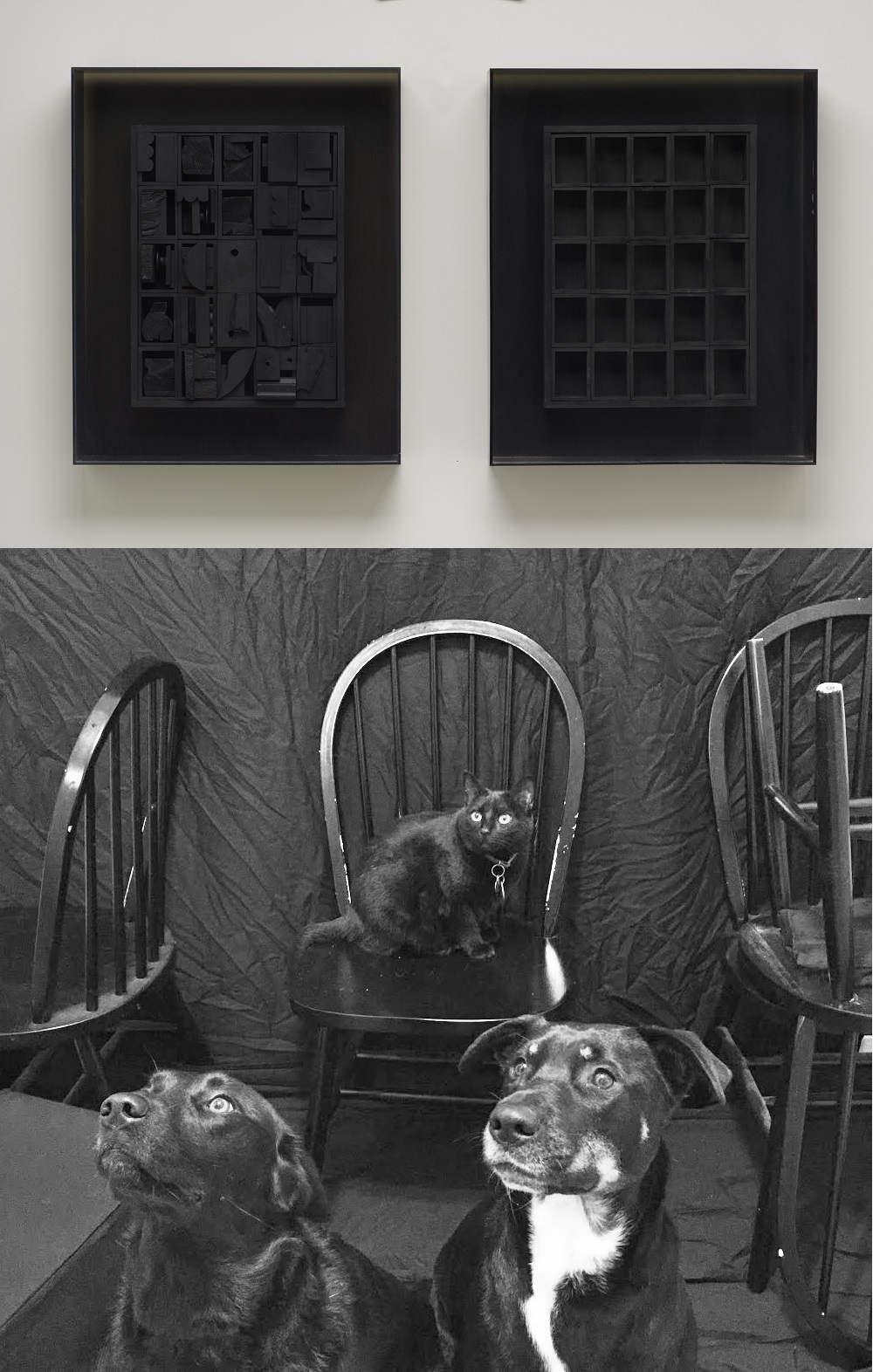
DMA Staffer: Danielle Schulz, Teaching Specialist
DMA Pet: Bella (Lab/Collie mix), Ruby (Lab/Retriever/Pointer mix), Kitty (Bombay), ages 2, 3, and 4
Portrait Inspiration: Louise Nevelson, Diminishing Reflections VIII (Left & Right), 1964
I wanted to play upon the animals’ color, as all three are entirely, or almost entirely, black. It therefore seemed fitting to take inspiration from sculptor Louise Nevelson’s monochromatic, abstract wooden forms.
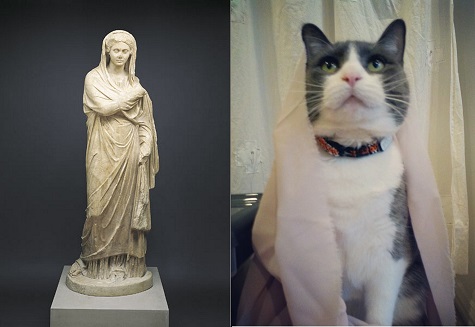
DMA Staffer: Fran Baas, Associate Conservator
DMA Pet: Annie, Domestic Shorthair (lovely gray-white with captivating golden eyes), age 4
Portrait Inspiration: Figure of a woman, Roman Empire, 2nd century A.D.
Again, a cat is a very difficult model. Annie wanted nothing to do with the soft drapery chosen to mimic the exquisitely carved marble drapery depicted in the ancient Roman figure of a woman. Like the noblewoman depicted, Annie typically radiates nobility and grace (until you try to cover her with fabric).

DMA Staffer: Emma Vernon, Manager of the DMA Partners Program
DMA Pet: Semiramis (Mirie), Shih-tzu/Poodle, age 10 months
Portrait Inspiration: William Wetmore Story, Semiramis, designed 1872, carved 1873
I chose Semiramis because she is Mirie’s namesake! I’ve always loved this gorgeous statue and the thrilling story of the ambitious Assyrian queen it represents. Mirie is still very much a puppy, so she may not be as graceful, but she certainly has the moxie!
Visit the DMA’s collection galleries, included in free general admission, to find inspiration for your pet’s high fashion and share your photos: #DressYourPetUp.
Images: Marlo Pascual, Untitled, 2009, digital C-print, Dallas Museum of Art, Lay Family Acquisition Fund, © Marlo Pascual; Fernando Campana, Humberto Campana, Banquete chair with pandas, designed 2006, stuffed animals on steel base, Dallas Museum of Art, DMAamfAR Benefit Auction Fund; John Singleton Copley, Woodbury Langdon, 1767, oil on canvas, Dallas Museum of Art, The Eugene and Margaret McDermott Art Fund, Inc.; John Singleton Copley, Sarah Sherburne Langdon, 1767, oil on canvas, Dallas Museum of Art, The Eugene and Margaret McDermott Art Fund, Inc.; Nandi, South India, c. 13th century, granite, Dallas Museum of Art, the Cecil and Ida Green Acquisition Fund and gift of David T. Owsley via the Alvin and Lucy Owsley Foundation; Georgia O’Keeffe, Grey Blue & Black—Pink Circle, 1929, oil on canvas, Dallas Museum of Art, gift of The Georgia O’Keeffe Foundation, © The Georgia O’Keeffe Foundation/Artists Rights Society (ARS), New York; Pietro Bellotti, Old Pilgrim, c. 1660s-1670s, oil on canvas, Dallas Museum of Art, The Karl and Esther Hoblitzelle Collection, gift of the Hoblitzelle Foundation; Piet Mondrian, Composition with Large Blue Plane, Red, Black, Yellow, and Gray, 1921, oil on canvas, Dallas Museum of Art, Foundation for the Arts Collection, gift of Mrs. James H. Clark, © 2015 Mondrian/Holtzman Trust, c/o HCR International Washington DC; Cornelis Saftleven, College of Animals, 1655, oil on canvas, Dallas Museum of Art, The Karl and Esther Hoblitzelle Collection, gift of the Hoblitzelle Foundation; Louise Nevelson, Diminishing Reflections VIII (Left & Right), 1964, painted wood, Dallas Museum of Art, Foundation for the Arts Collection, anonymous gift, © Estate of Louise Nevelson/Artists Rights Society (ARS), New York; Figure of a woman, Roman Empire, 2nd century A.D., marble, Dallas Museum of Art, gift of Mr. and Mrs. Cecil H. Green; William Wetmore Story, Semiramis, designed 1872, carved 1873, marble, Dallas Museum of Art, gift of Morynne and Robert E. Motley in memory of Robert Earl Motley, Jr., 1942-1998
Amanda Blake is Head of Family, Access, and School Experiences and Kimberly Daniell is the Manager of Communications and Public Affairs at the DMA.
